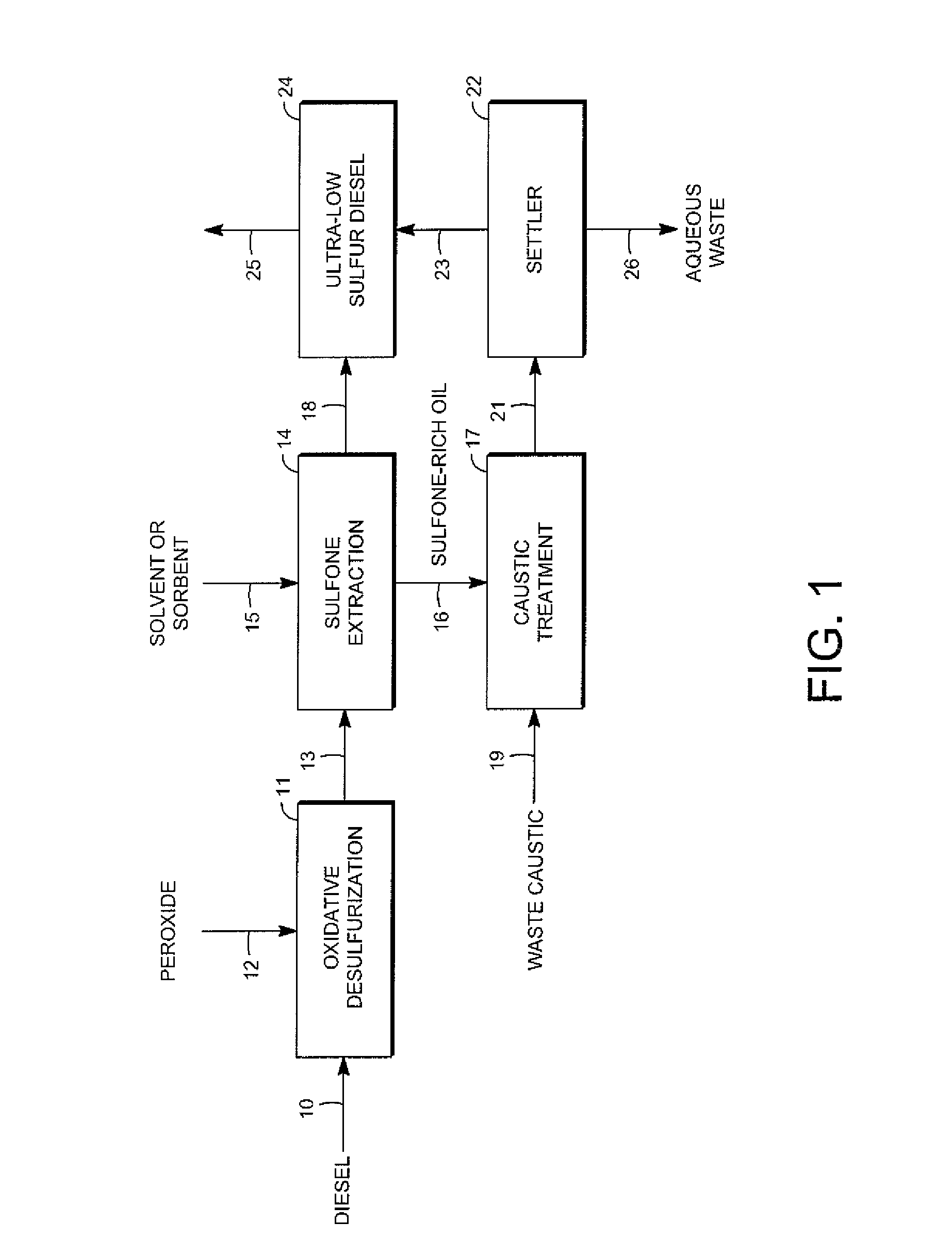Removal of sulfur-containing compounds from liquid hydrocarbon streams
a technology of liquid hydrocarbons and sulfur compounds, applied in hydrocarbon oil treatment products, fuels, refining with aqueous alkaline solutions, etc., can solve the problems of reducing the efficiency of catalytic converters in automobiles, affecting the efficiency of catalytic converters, etc., to achieve easy separation or extraction, the effect of easy separation
- Summary
- Abstract
- Description
- Claims
- Application Information
AI Technical Summary
Benefits of technology
Problems solved by technology
Method used
Image
Examples
Embodiment Construction
[0026]As shown in FIG. 1, a refined diesel must be subjected to desulfurization process in order to meet current and future environmental standards. In oxidated desulfurization diesel is provided through the line 10 to a mixing vessel 11 and combined with peroxide through the line 12. In the vessel 11, various thiophenes, of both the unsubstituted and substituted type are oxidized to sulfones, of both the substituted and unsubstituted types.
[0027]A preferred oxidant for treating the fuel or diesel stream is hydrogen peroxide. However, various oxidizing agents may be used including alkylhydroperoxides, other peroxides, percarboxylic acids, oxygen and air as well as combinations thereof
[0028]Typically, the temperature within the vessel 11 will range from about 40 to about 120° C. The pressure within the vessel 11 will then typically range from about 0.5 to about 15 atm. Residence time of the vessel 11 will range from about 0.1 to about 50 hours Depending upon the oxidizing agent utili...
PUM
| Property | Measurement | Unit |
|---|---|---|
| pressure | aaaaa | aaaaa |
| temperature | aaaaa | aaaaa |
| volume ratio | aaaaa | aaaaa |
Abstract
Description
Claims
Application Information
 Login to View More
Login to View More - R&D
- Intellectual Property
- Life Sciences
- Materials
- Tech Scout
- Unparalleled Data Quality
- Higher Quality Content
- 60% Fewer Hallucinations
Browse by: Latest US Patents, China's latest patents, Technical Efficacy Thesaurus, Application Domain, Technology Topic, Popular Technical Reports.
© 2025 PatSnap. All rights reserved.Legal|Privacy policy|Modern Slavery Act Transparency Statement|Sitemap|About US| Contact US: help@patsnap.com


